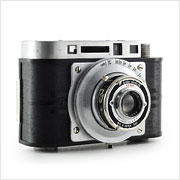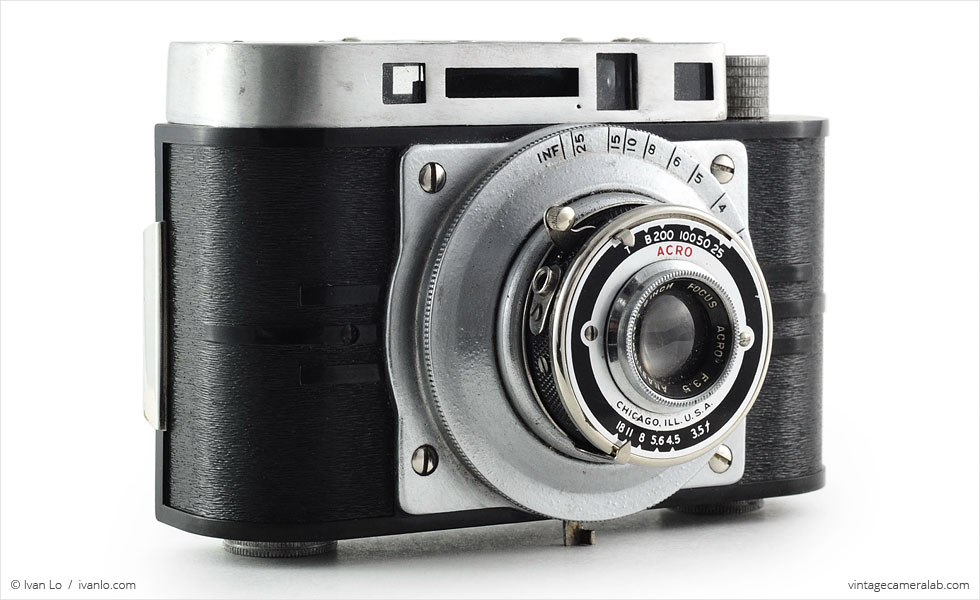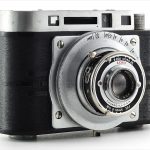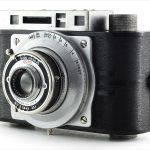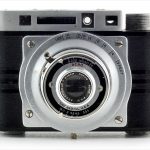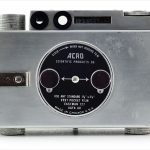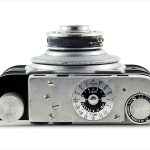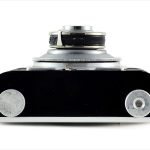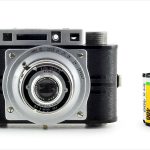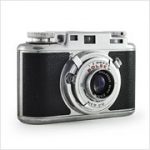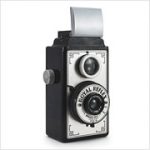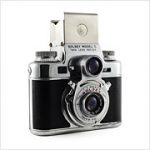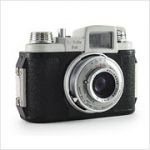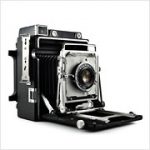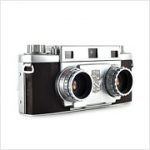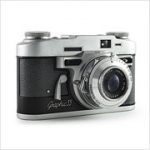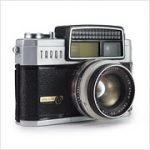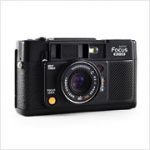Acro Model R Specifications
| Manufacturer: | Acro Scientific Products Co. |
| Origin: | USA |
| Made in: | Chicago, IL, USA |
| Introduced: | 1940 |
| Type: | Rangefinder |
| Format: | 127 Film |
| Dimensions: | 12.7 x 8.5 x 6.7 cm |
Acro Model R Overview
The Acro Model R is a relatively obscure World War II era rangefinder camera introduced in 1940 by the Acro Scientific Products Company of Chicago. Like Spartus, Acro was part of the “Chicago Cluster,” a group of Chicago-based camera brands that produced a series of nearly identical Bakelite cameras. However, unlike the vast majority of those cameras that were designed to be simple and cheaply made, the R is an upscale model for advanced amateurs.
On top of the Model R’s Bakelite body sits a metal housing that contains two features that set it apart from the vast majority of other American cameras of its day: a rangefinder assembly and a light meter. The rangefinder (the left-most window round, next to the viewfinder) is easy to use although it is uncoupled, meaning that it is not directly connected to the lens but rather requires the large focus dial at the base of the lens to match the reading on the small one on the top plate. The long rectangular window next to the viewfinder is for the light meter. Known as an extinction meter, this early solution does not rely on photovoltaic cells but rather a series of numbers with varying levels of neutral density filters. The user points the camera at the subject, allows light to pass through the numbers (1-9), and then takes a reading based on the last readable number. That number is then fed into the mechanical exposure calculator dial on the top plate which then determines the most ideal shutter speed and aperture combinations.
Most of the Model R’s controls can be found on the lens. The aperture selector is found beneath the front element and the shutter speed dial on top. The shutter lever is located at 11 o’clock on the lens barrel with a threaded shutter release socket at 10. The large metal focus wheel is at the base of the lens with a tiny kickstand at the bottom to help stand the camera up on a tabletop. Next to the rangefinder and light meter housing is a film advance knob. The entire back plate of the camera is held in place by a metal latch and is completely removable. On the back is a rotating disc that obscures and reveals two red windows. The bottom plate features a tripod socket on one side and a film rewind knob on the other.
When it was released, the Model R was available with two different lenses: one with a maximum aperture of f/4.5 for $15 (about $250 today) and one with a maximum aperture of f/3.5 (seen here)for $18.50 (about $310). Luckily, I got mine for about $20 through an eBay auction. It’s in great cosmetic and mechanical condition except for a jammed focus wheel which is apparently a very common issue among these cameras.
Find your very own Acro Model R on eBay.
McKeown, James M. and Joan C. McKeown’s Price Guide to Antique and Classic Cameras, 2001-2002. (Grantsburg, WI, USA: Centennial Photo Service, 2001), p 7.
“The Chicago Cluster,” Camera Wiki, http://camera-wiki.org/wiki/The_Chicago_Cluster
